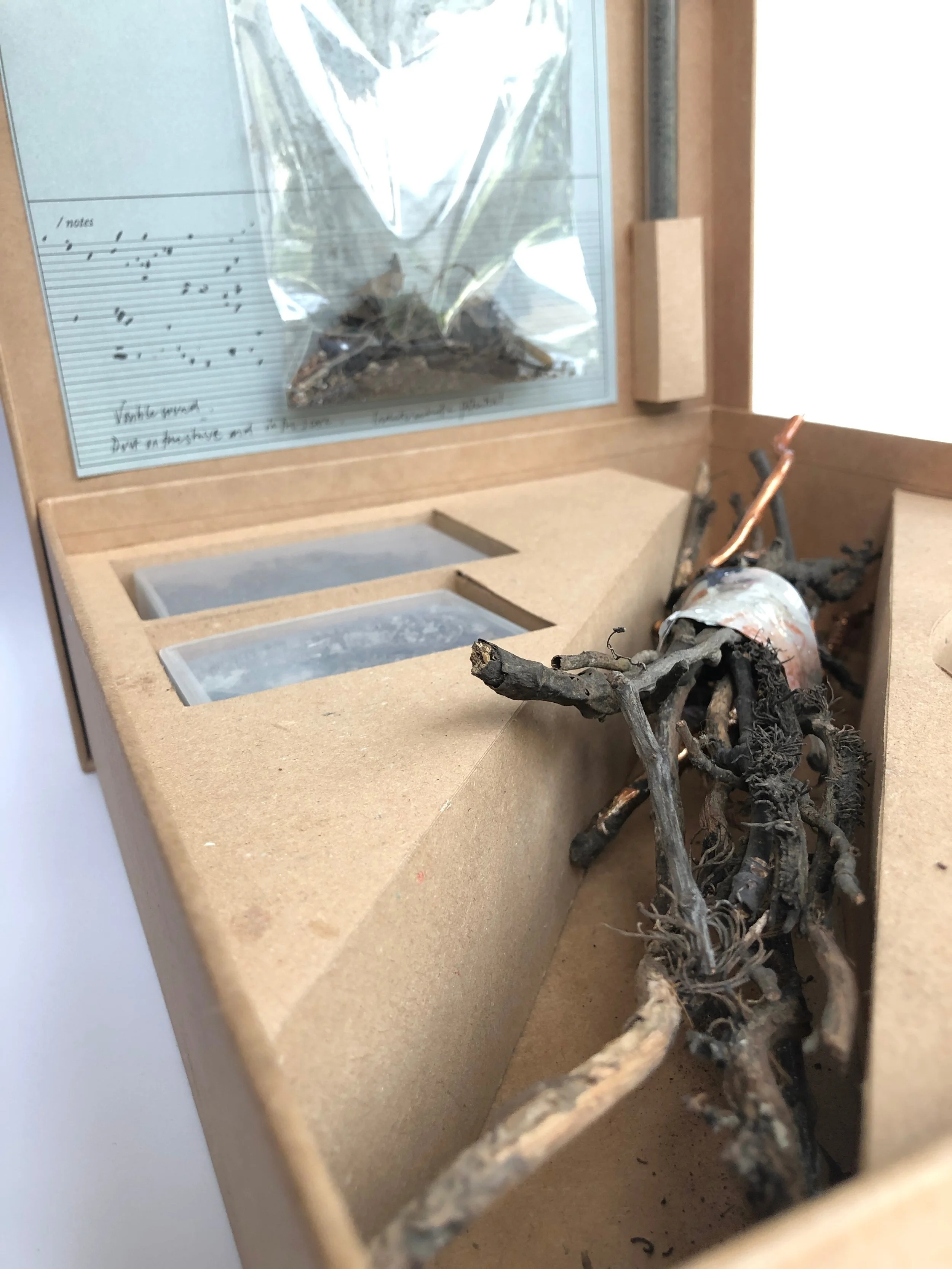










Dustopia is an ongoing research and archival orientated project, begun in 2012, that registers Huxley’s encounters with dust. Dust is collected from places and contexts that either are undergoing, or have a history with, a state of change, transition, transformation or conflict. The archival boxes are a visual taxonomy for this material research, forming a central reference point for her painting practice. They exist as a utopian space for the world of dust, but they also present as another space to test and curate dust’s potential.

Rathfarnham I | The dust that went to ground
37.5cm x 28.5cm x 8cm
archival box, dust, fragment samples and mixed media

Rathfarnham II | Another Visibility
Inside the archival box, hidden under the small soot covered canvas, is a small speaker that emits a recording of wind from the chimney in the dining room of the castle. The sound vibrates and moves the dust on the surface of the canvas.
37.5cm x 28.5cm x 8cm
archival box, mixed media, stretched canvas, soot, bluetooth speaker and notes

Rathfarnham III | Empire of Dust
Installed with an unopened Furoshiki. A collection of loose papers wrapped by a blue of infinite hue containing nothing and everything.
37.5cm x 28.5cm x 8cm
archival box, dust, wax, mixed media and notes

Rathfarnham IV | 404 observations
404 observations and drawings were made of particle traces on the dining room walls at Rathfarnham Castle. The drawings were cut out to produce templates for two paintings, Lacuna and Lacuna’s Echo.
37.5cm x 28.5cm x 8cm
archival box, mixed media, 404 paper cutouts and tablet containing looped stop motion

Rathfarnham V | The Last Dust
Physical fragments, dust and left over sound. Twigs that the castle jackdaws collected.
37.5cm x 28.5cm x 8cm
archival box, dust, collected fragments, soot and wax, twigs, paint and other mixed media